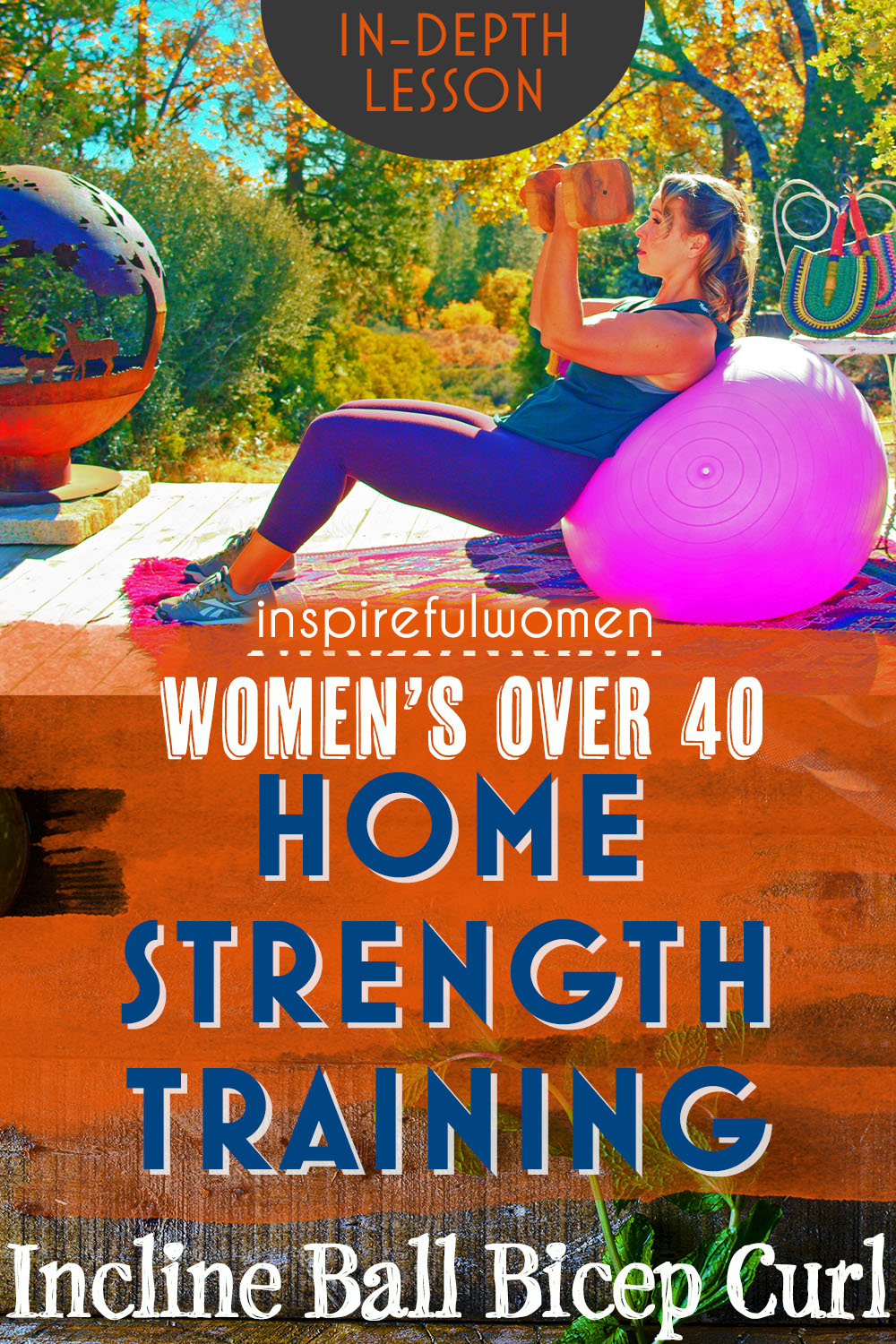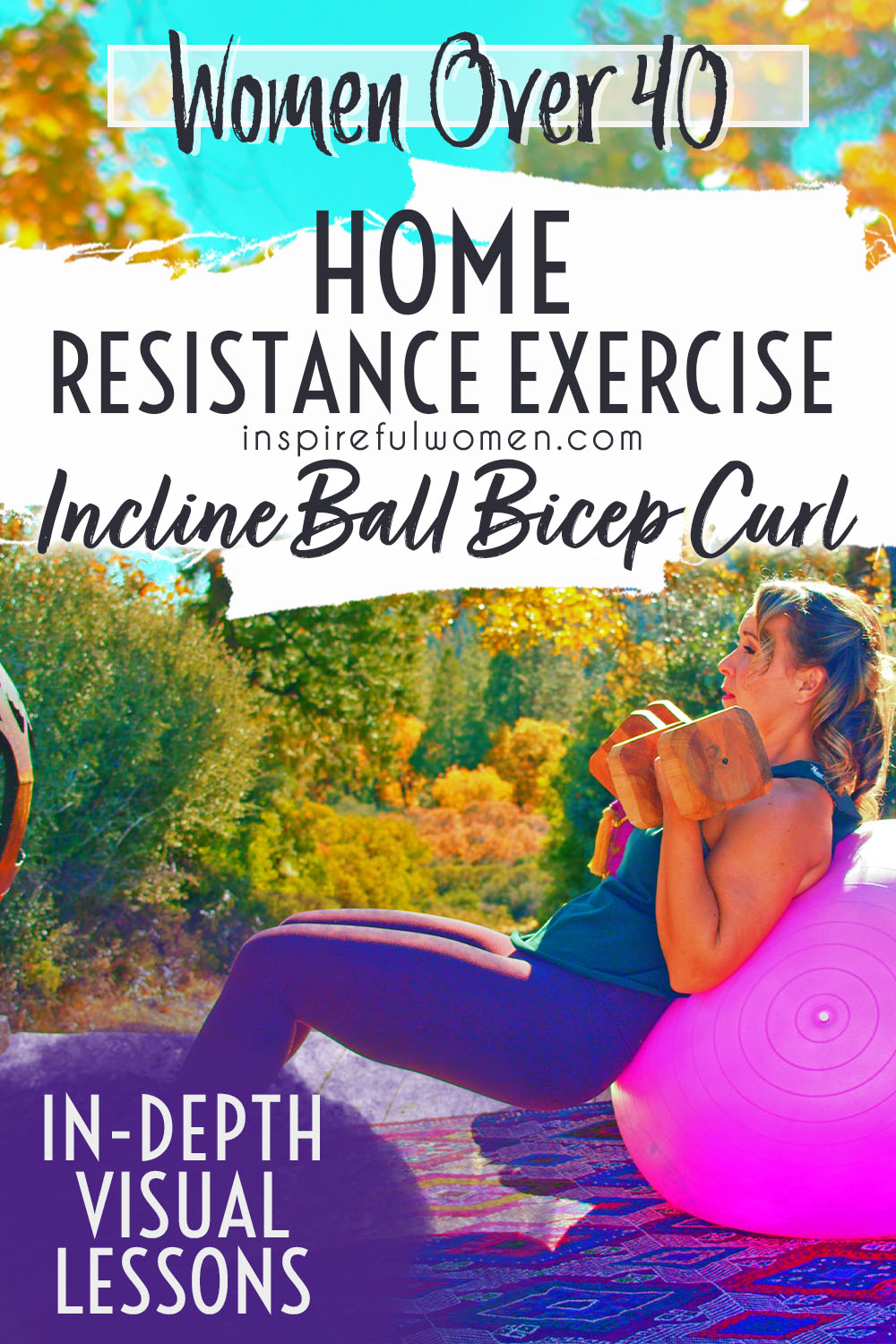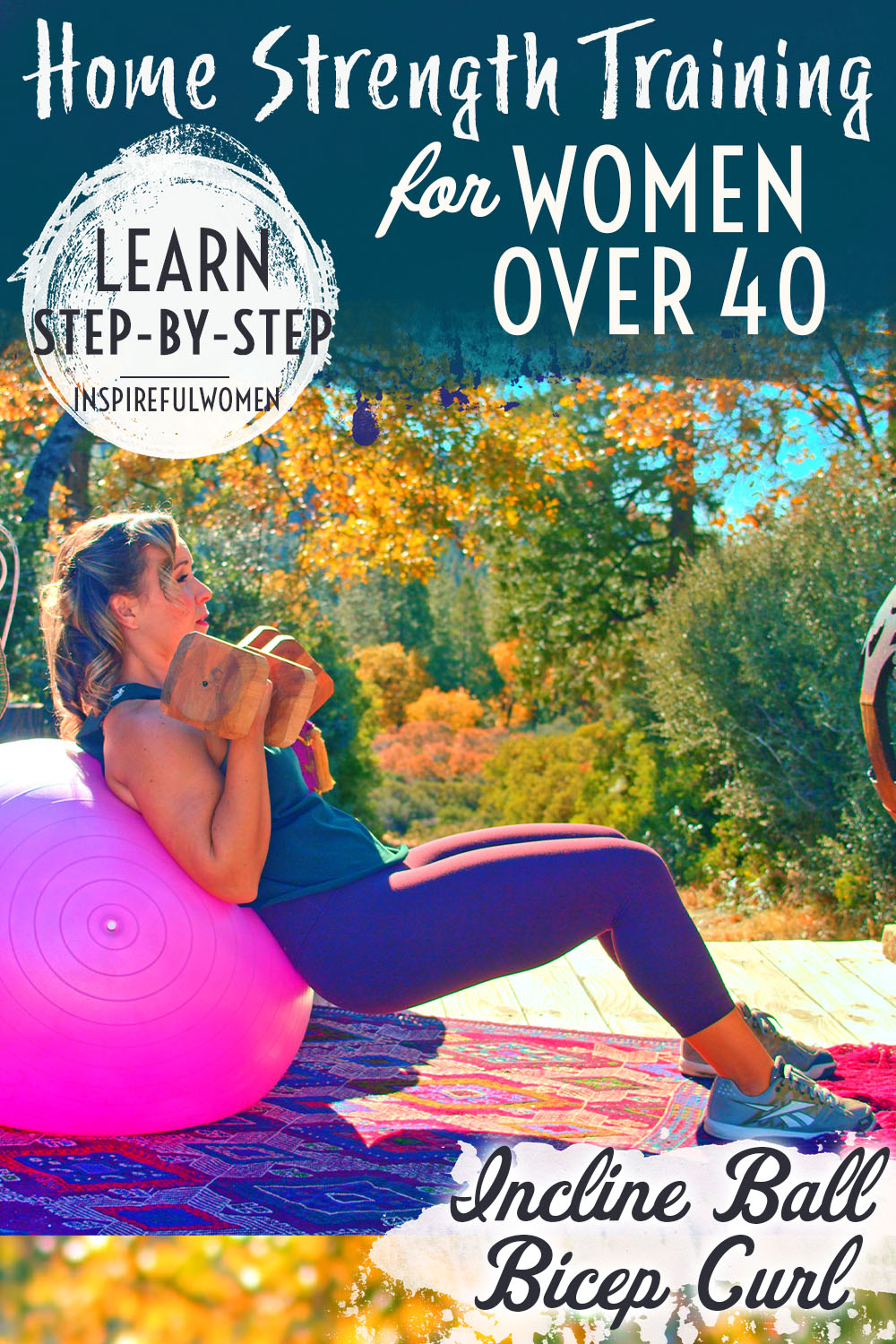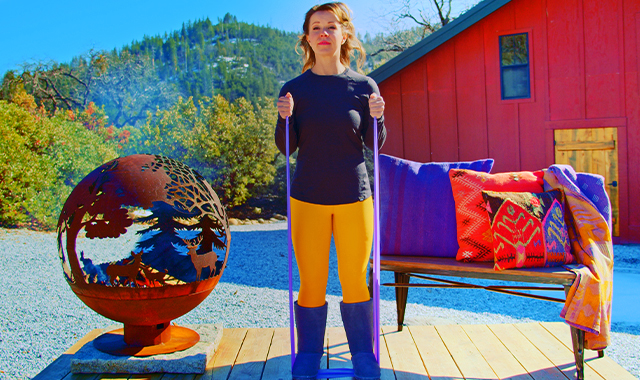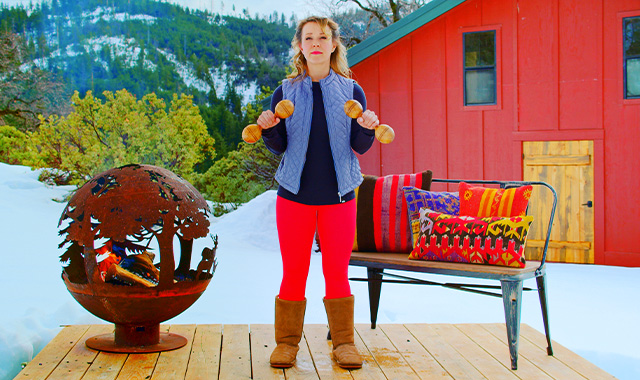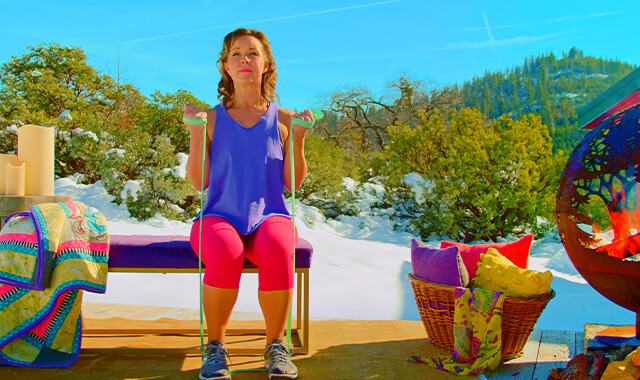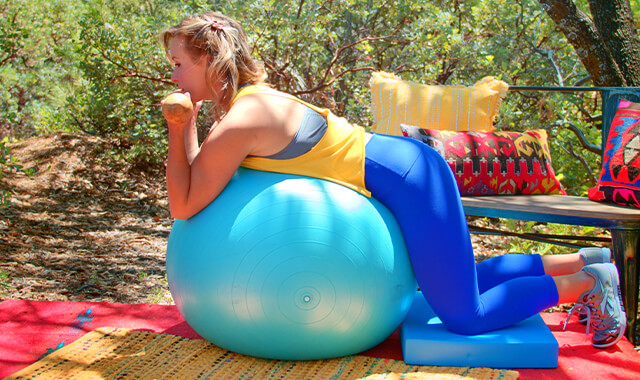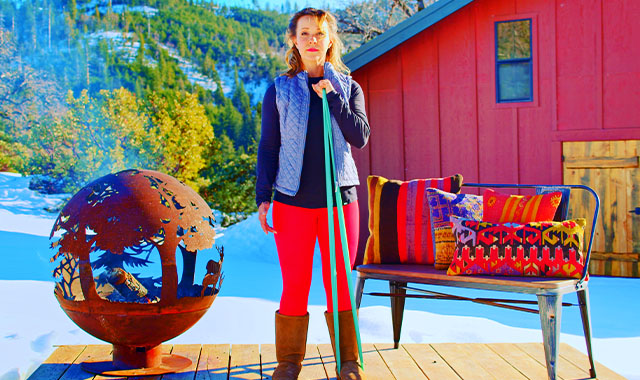Swiss Ball Incline Dumbbell Bicep Curl
How to Do the Gym Ball Dumbbell Incline Bicep Curl Alternative | In-Depth Guide [VISUAL LEARNERS] Beginner
Proper Form, Common Mistakes & Easier Variation | Home Strenght Training
WHAT DO YOU WANT TO SEE?
QUICK DEMO
QUICK DEMO
MUSCLES THIS WORKS
MUSCLES
MAIN MUSCLES WORKED IN Swiss Ball Incline Dumbbell Bicep Curls
BICEPS BRACHII
OTHER MUSCLES WORKED:
- Brachialis
- Supinator
STARTING POINTERS
Starting Pointers
WHAT WE'RE DOING TODAY
ALL WE'RE DOING:
A simple bicep curl, while inclined on a ball.
This variation of the supine - lying on your back, biceps curl is done using a stability ball to support the upper back. This position allows you to work the biceps through a large range of motion. Inclining on the ball allows you to position your arms so that you will activate the long head of the biceps in addition to the short head. The upper arm is back behind the torso, the movement starts with bending the elbow and then adds a small amount of shoulder flexion at the end. Also, the dumbbell is cleared from the floor so you are able to start with the forearm in neutral and supinate as the elbow is flexed - this will target elbow flexion, and forearm supination, and work the long head arm for shoulder flexion. This is an excellent way to target your biceps effectively, build strength, and enhance the overall aesthetics of your arms
When you use dumbbells for bicep curls, the workload will be the greatest when the forearm is parallel with the floor. In a standing bicep curl, the forearm is parallel to the floor when the elbow is bent to 90 degrees - this is also the position where the biceps are the strongest. In this movement, because of the inclined position, the forearm is parallel to the floor when the elbow is bent to less than 90 degrees (depending on the ball size and your exact position). This will challenge the biceps muscle in a position where it is not as strong.
This version of the biceps curls adds a bonus leg workout as the muscles work isometrically to stabilize the body during the arm movement.
HOW TO DO THE EXERCISE
LOOKS
HOW Stability Ball Incline Dumbbell Bicep Curls SHAPE OUR BODY
Tone and definition in the front of the upper arm.
PROPER FORM
PROPER FORM: Gym Ball Incline Dumbbell Bicep Curl
EQUIPMENT, SETS & REPS
EQUIPMENT
STABILITY BALL
Tip: It's best to get one that has a slightly textured feel to it, like the pearlescent ones. If they don't have a textured surface, the ball tends to be slippery on the surface (carpet, floor, whatever) and it can come out from under you pretty easily (ask me how I know).
Here are my recommendations that have a textured surface:
One size, many color options. I have one of these at home and it doesn't slip.
Galsports has different size options for the ball which is nice if you are fairly tall or fairly short. Your height will change what size ball will be the best for you. I have one of these in the Large size, which is about the "standard" ball size, and it works well. The small size is too small for our purposes no matter your height.
Shoes or bare feet - to prevent the feet from sliding.
SUGGESTED STARTING WEIGHT FOR WOMEN:
8 -10 lbs
SETS & REPS:
2 sets of 8 reps
PACE:
Quick up and slow and controlled down.
BODY POSITION
BODY POSITION FOR THE Gym Ball Incline Dumbbell Bicep Curl
BALL: Sit on the floor with the ball at your back. Hold the dumbbells on your thighs.
FEET: Feet flat on the floor. Hip width apart. Toes straightforward.
BODY STANCE: Neutral spine position, including neck. Sternum lifted, shoulders back. Push into the floor with your feet to lift your bottom off of the floor. Your head and neck will be off of the ball and your upper back is supported. Push up until the bottom head of the weight is not touching (or just touching) the floor. To avoid straining your neck, you may need to lower your chin towards your chest - this is fine.
ARMS: Your arms are relaxed by the sides, upper arms close to your body, elbows straight. Position yourself on the ball so that the weights clear the floor.
GRIP: Holding one dumbbell in each hand with a neutral grip, the top head touching the thumb side of your hand.
HOW TO DO
HOW TO DO Stability Ball Incline Dumbbell Bicep Curls
CUE: Take time to get the set up correctly - if you are working too hard just to hold the position, adjust your position before continuing.
Bend your elbows to lift the dumbbells up towards your shoulders.
As you bend your elbows rotate (supinate) your forearm so that the heads of the dumbbells on the pinky side of your hand leads the way. Try to complete the forearm rotation by the time your forearm is parallel with the floor (to maximize the resistance on the biceps and supinator muscles). NOTE: we are not fully bending the elbow as far as you can like in a regular bicep curl in this case. We are only bending the elbow 90 degrees. This is because of the positioning of this version of a bicep curl is such that, if we were to bend all the way, the muscle would not be working hard enough for this to be an effective exercise.
When your elbow is bent about 90 degrees, pause. Lift your upper arm up until it is parallel to the floor.
Slowly lower reverse the movement to lower the weights back down to the starting position to begin the next rep.
* how hard the long head of the biceps works to flex the shoulder is dependent on the position of the dumbbell - when your elbow is bent 70 - 80 degrees your biceps will have to work harder than when your elbow is bent to 90 degrees.
HOW TO SAFELY GET OUT OF THE EXERCISE
Straighten your elbows. Lower your bottom to the floor. Set the weights on the floor.
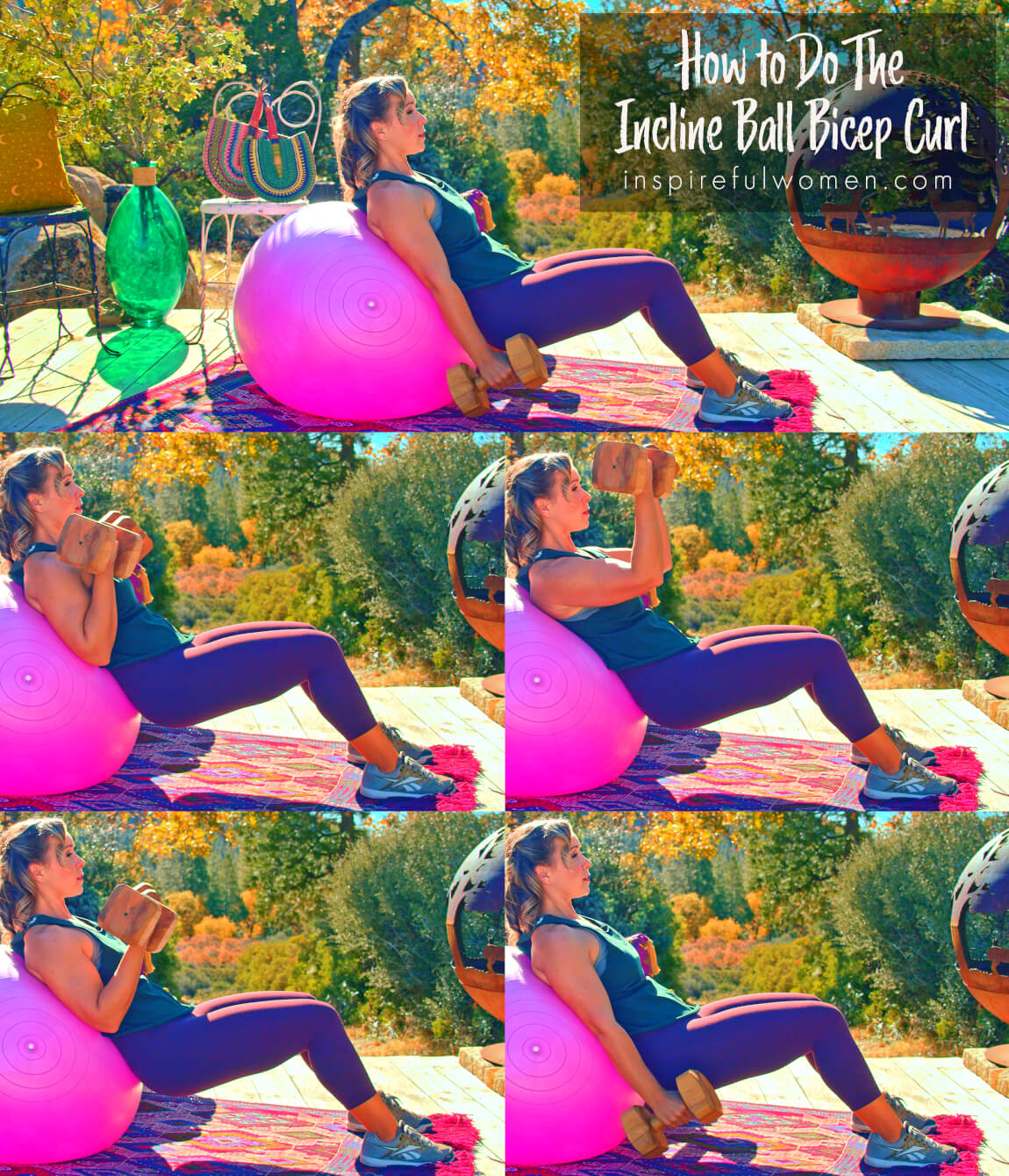
COMMON MISTAKES
COMMON MISTAKES
WHAT TO AVOID WITH THE Ball Incline Dumbbell Bicep Curl
KEY TIP:
Guess what? Good news! Many avoids are the same for most movements. Once you learn the basics, there's really only a few extra avoids for each individual movement.
1. Avoid Over Straigthening Elbow
AVOID: Avoid hyperextending your elbows.
WHY NOT?
- This will irritate the elbow joint.
WHAT TO DO:
- Keep a slight tiny bend when you come down.
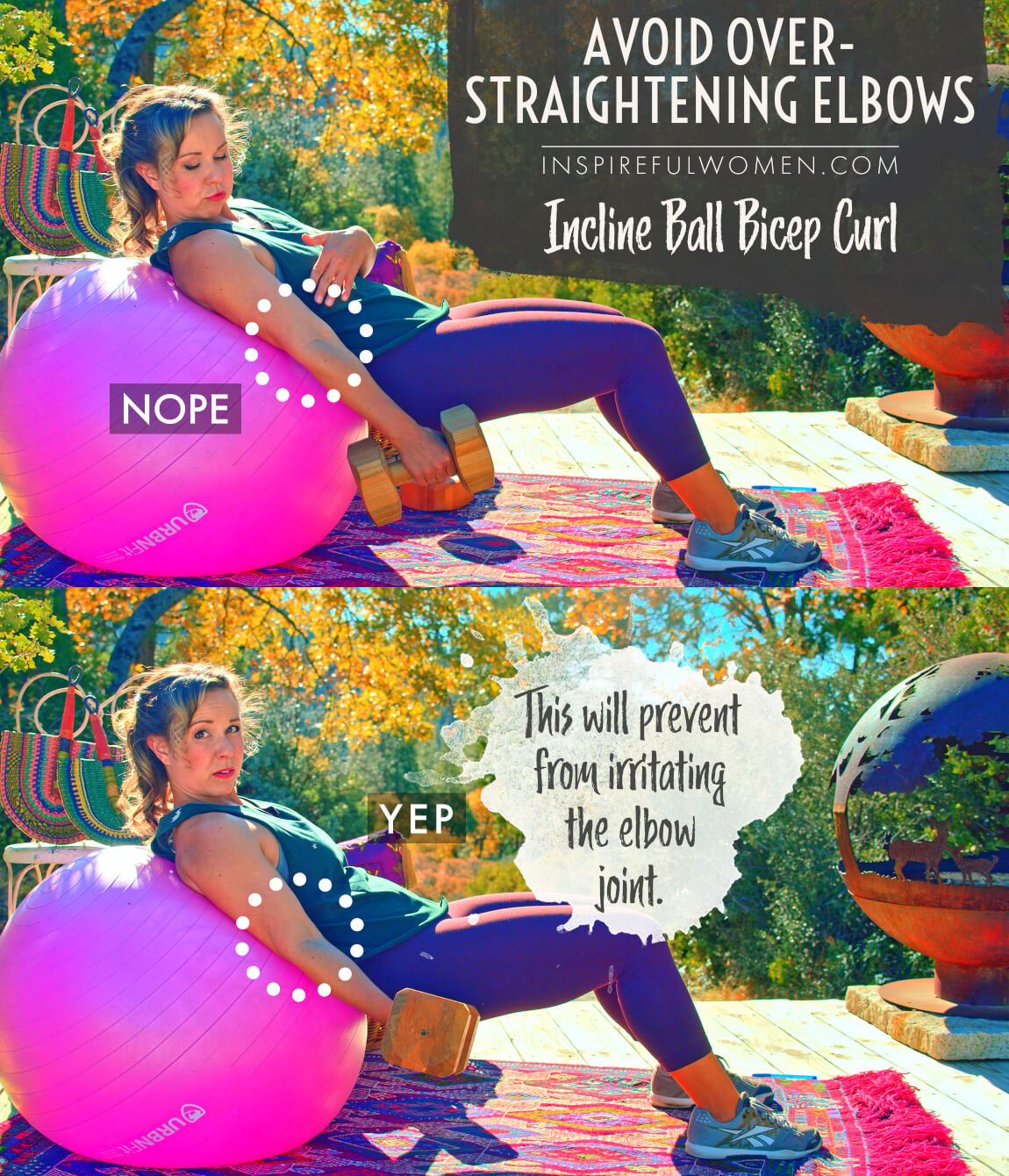
2. Avoid Dumbbells Hitting Floor
AVOID: Avoid the dumbbells hitting the floor.
WHAT TO DO:
- Position your body so the dumbbell won't hit the floor as you bring the weights down.
- Keep tension in the biceps to be effective.
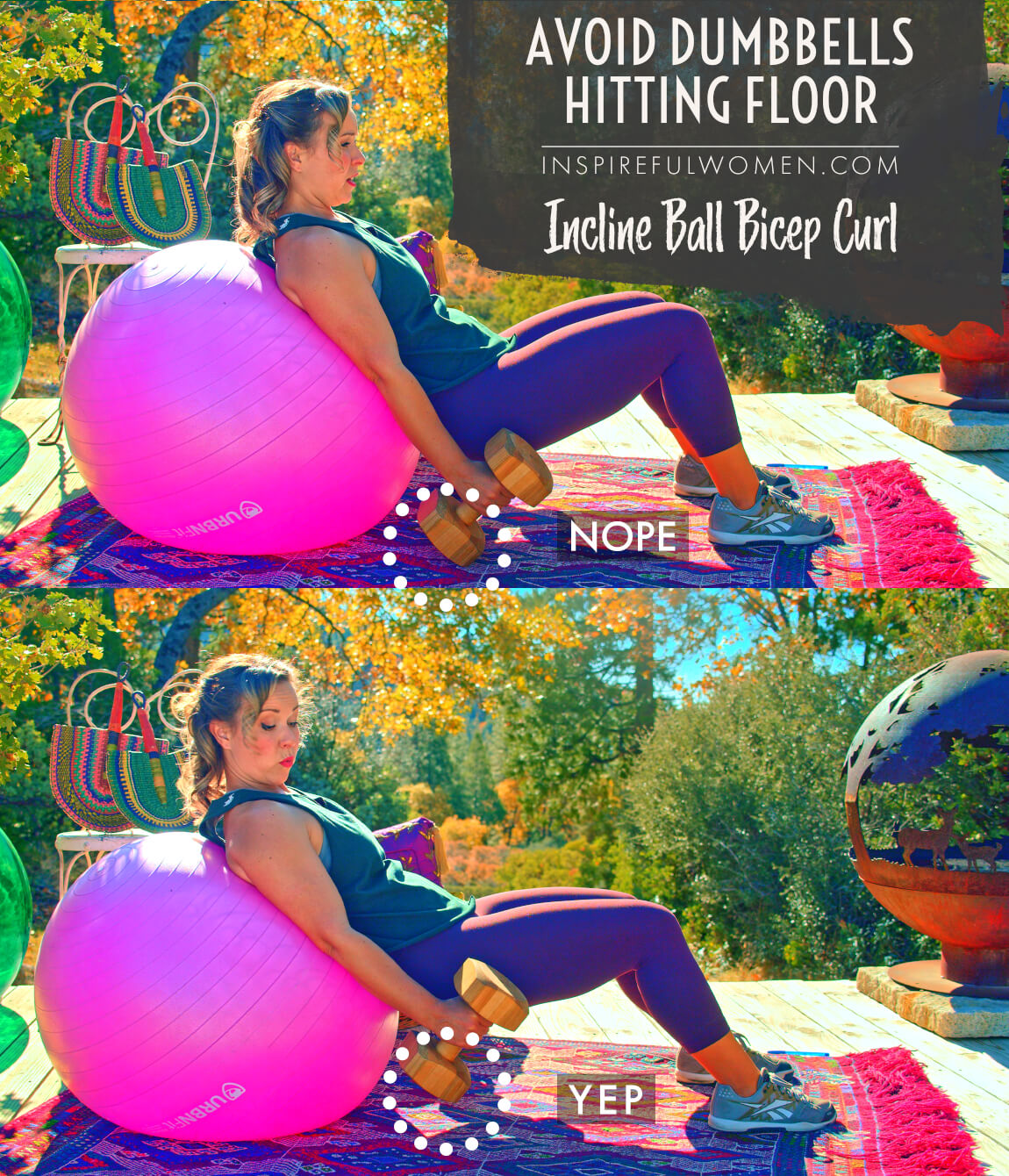
3. Avoid Too Fast Down
AVOID: Avoid too fast lowering down.
WHAT TO DO:
- Do not just drop your arms when lowering the weights. Lower the weights slowly and with control. This will help you train your muscles to get stretched without getting injured.
MAKE IT EASIER
EASIER
MAKE THE Ball Incline Dumbbell Bicep Curl MORE DOABLE
BALL AGAINST WALL
ball against wall incline biceps curl
Securing the ball against a wall will make it easier to hold your body position.
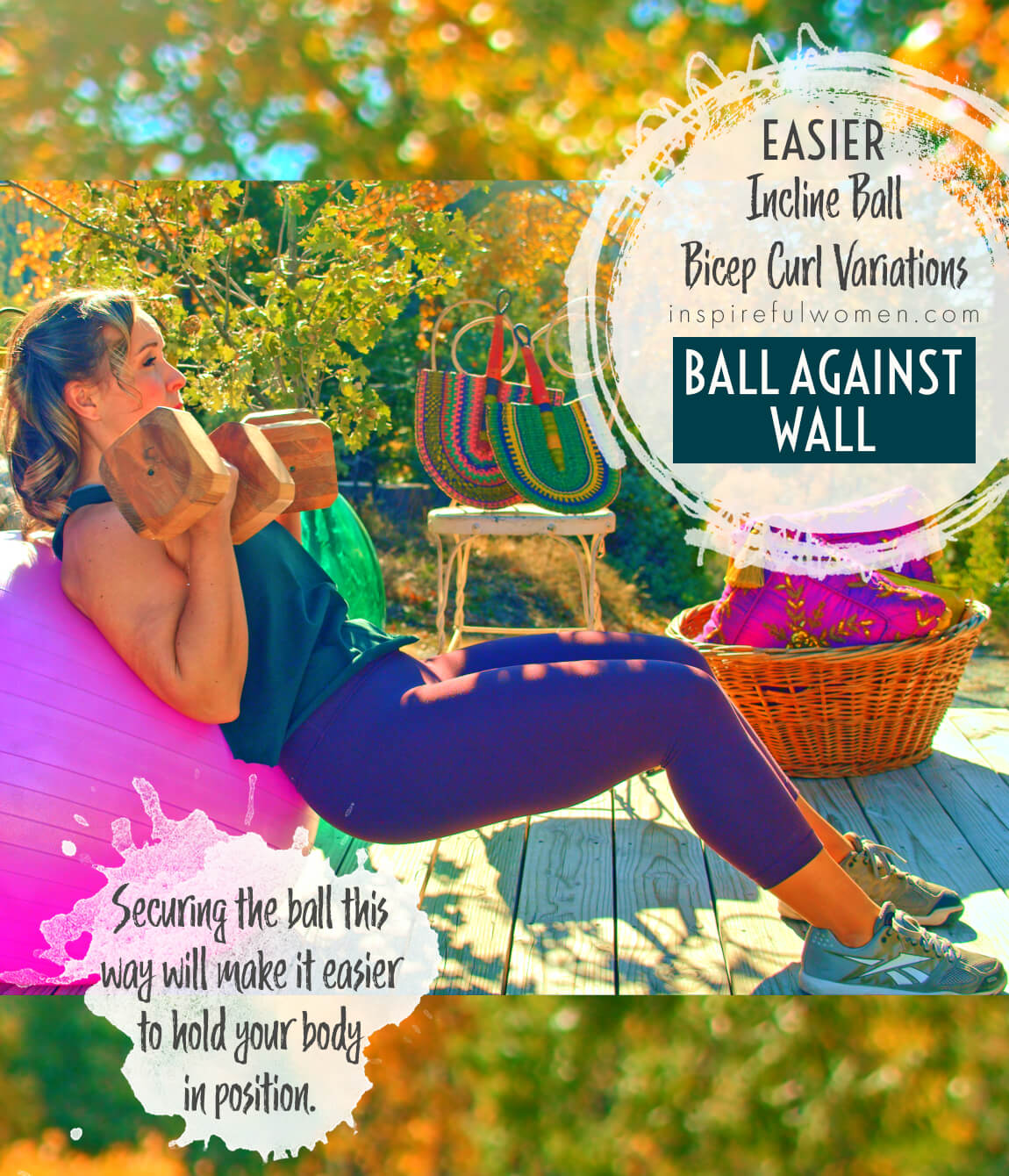
Skip Shoulder part
Skip Shoulder part incline biceps curl
Take out the portion of the exercise where you lift the elbow. You can just do the curl portion.
WHAT WE'RE DOING TODAY
WHAT & WHY
BENEFITS OF TRAINING THE Biceps
WHAT
THE REST OF YOU GETS TO KINDA REST
This group of biceps exercises are done lying down on your back (supine). In order to make it so that the biceps muscles are working against resistance, we have to use a resistance band because we don't have gravity to act as a force on a dumbbell in this case (as in standing).
When you are lying down the muscles that work to hold the torso upright can relax, and the upper arm is supported on the floor. This position allows you to really focus on trying to isolate the movement to the elbow joint. In the supported position you usually can use a stronger resistance band to really challenge this powerful muscle.
The biceps brachii (bicep means that the muscle has two heads connecting at different places, and brachii - meaning arm) exercises is the big muscle lying on the upper part of the front of the arm - between the elbow and the shoulder. Biceps curls are done by bending (flexing) the elbow, and some variations include either holding the forearm in a rotated palms up position (supination) or actively rotating the forearm as the elbow bends. These are the two main functions of the biceps brachii muscle.
WHY BOTHER DOING IT?
WHY
WHY DO WE EVEN CARE?
BECOME A LEAN MEAN LIFTING MACHINE - JUST KIDDING. BUT KINDA NOT.
Having strong and healthy biceps can improve your ability to lift more and use your arms for long periods of time without discomfort or injury. The biceps are one of our larger arm muscles and are heavily involved in both holding heavier items and lifting & carrying heavier items. You WILL become more capable with these sorts of tasks when you strengthen your biceps!
MORE FOCUS ON JUST BICEPS + HEAVIER TRAINING
Some people have trouble doing standard biceps curls with proper form - they may round their shoulders forward, use their upper traps too much, let their upper backs round forward, or move their lower backs to help them bend their elbows. These errors can be made worse when they try to increase resistance. In the supine position, the upper back can relax into the floor, opening the chest and letting the upper back and neck muscles relax. The shoulder muscles, including the biceps, do not have to work to hold the shoulder stable. This allows you to really focus on using the biceps to bend the elbow. This is a good option for those that have trouble with their form in standing or for those that want to add some heavier training for their biceps.
DO STANDING BICEP CURLS TOO
It is important to note that when we use our biceps in most everyday activities, we should have good form, including stable shoulders and torso. So, this should not be the only biceps exercise that you do in your weekly routine. This option helps to teach proper form and can allow you to work with heavier resistance. It can also be used with lighter weights in times of shoulder pain or discomfort - so you can still work the biceps without irritating the shoulder.
EVERYDAY LIFE
EVERYDAY LIFE &
MUSCLE FUNCTION
HOW WE USE OUR Biceps MUSCLES IN EVERYDAY LIFE
1. BENDING THE ELBOW (ELBOW FLEXION)
- Pulling the covers up in bed
- Pulling socks up
- Eating
- Lifting glass for drinking
- Lifting
- Carrying
- Washing/brushing hair
- Stirring
- Painting
- Brushing your teeth
- Weeding
- The list is pretty much endless...
2. TURNING YOUR FOREARM UP (SUPINATION)
- Turning a doorknob
- Using a screwdriver
- Turning a key
- Turning a spigot
- Receiving change
- Carrying a plate
3. LIFTING THE ARM (SHOULDER FLEXION)
- Reaching up
- Dressing
- Pushing a window up
- Washing windows
- Lifting up to the front - kids, boxes
- Carrying in front: kids, groceries, books
4. STABILIZING THE ELBOW AND SHOULDER
- Writing
- Knitting
- Reading a book
- Using a screwdriver
- Holding items in front of you - carrying a heavy box, pushing a wheelbarrow
HOW TO FEEL WHAT MUSCLE IS WORKING
How to Feel What Muscle is Working
Bend your elbow. Place the other hand on the upper arm with the bent elbow. Lift a heavy object with the arm - you will feel the biceps contract under your hand.
SCIENCY STUFF
ALLLL MUSCLES & WHEN
ALL MUSCLES WORKING & WHEN DURING THE Stability Ball Incline Dumbbell Bicep Curl
The leg muscles work isometrically to hold the body still on the ball.
The brachialis and biceps contract concentrically to bend (flex) the elbow and rotate (supinate) the forearm along with some contribution from the supinator muscle. The brachioradialis does not contribute unless power or speed is needed – for quicker movements or heavy loads.
The long head of the biceps will be working isometrically/concentrically to hold the upper arm still (avoiding gravity pulling it back) and then into flexion.
The wrist muscles (flexor carpi radialis FCR, flexor carpi ulnaris FCU and palmaris longus)) work to hold the wrist in a neutral position as the weight of gravity pulls down on the weight held in the hand.
The biceps brachii and brachialis work eccentrically to straighten the elbow and return to the starting position.
PIN IT FOR LATER!
